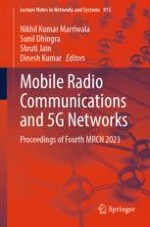2024 | OriginalPaper | Buchkapitel
Intelligent Feature Engineering and Feature Selection Techniques for Machine Learning Evaluation
verfasst von : Janjhyam Venkata Naga Ramesh, Ajay kushwaha, Tripti Sharma, A. Aranganathan, Ankur Gupta, Sanjiv Kumar Jain
Erschienen in: Mobile Radio Communications and 5G Networks
Verlag: Springer Nature Singapore
Aktivieren Sie unsere intelligente Suche, um passende Fachinhalte oder Patente zu finden.
Wählen Sie Textabschnitte aus um mit Künstlicher Intelligenz passenden Patente zu finden. powered by
Markieren Sie Textabschnitte, um KI-gestützt weitere passende Inhalte zu finden. powered by
